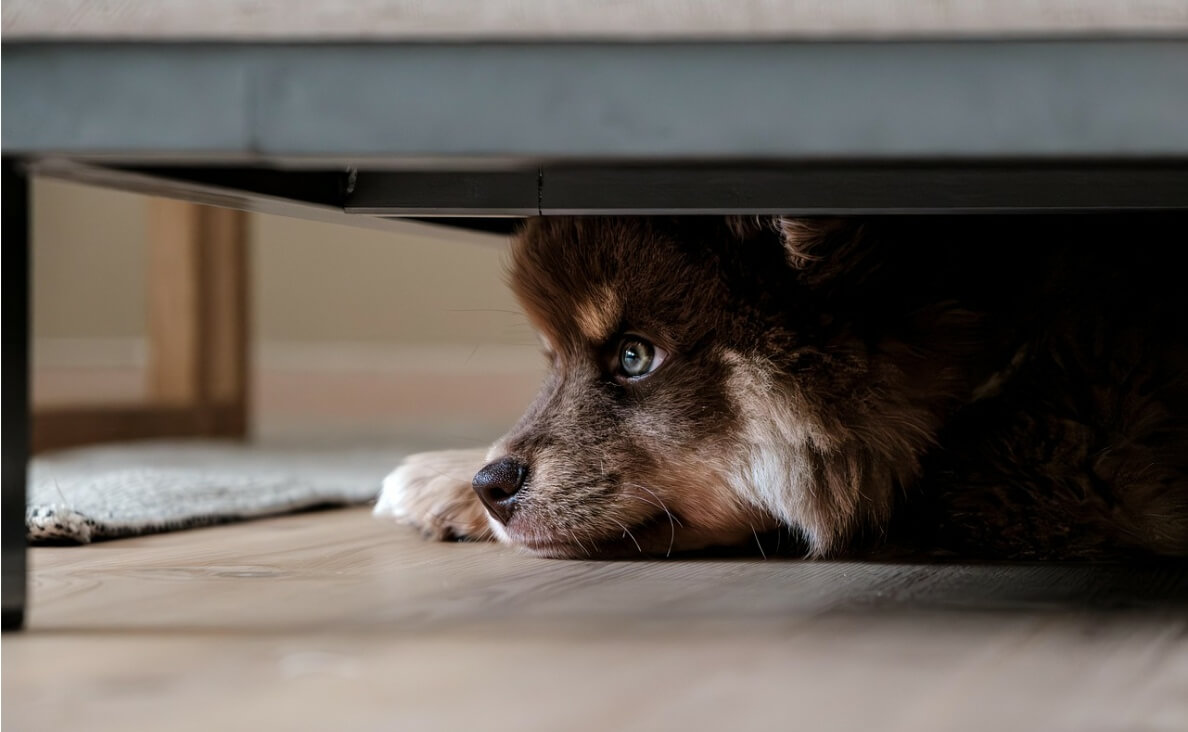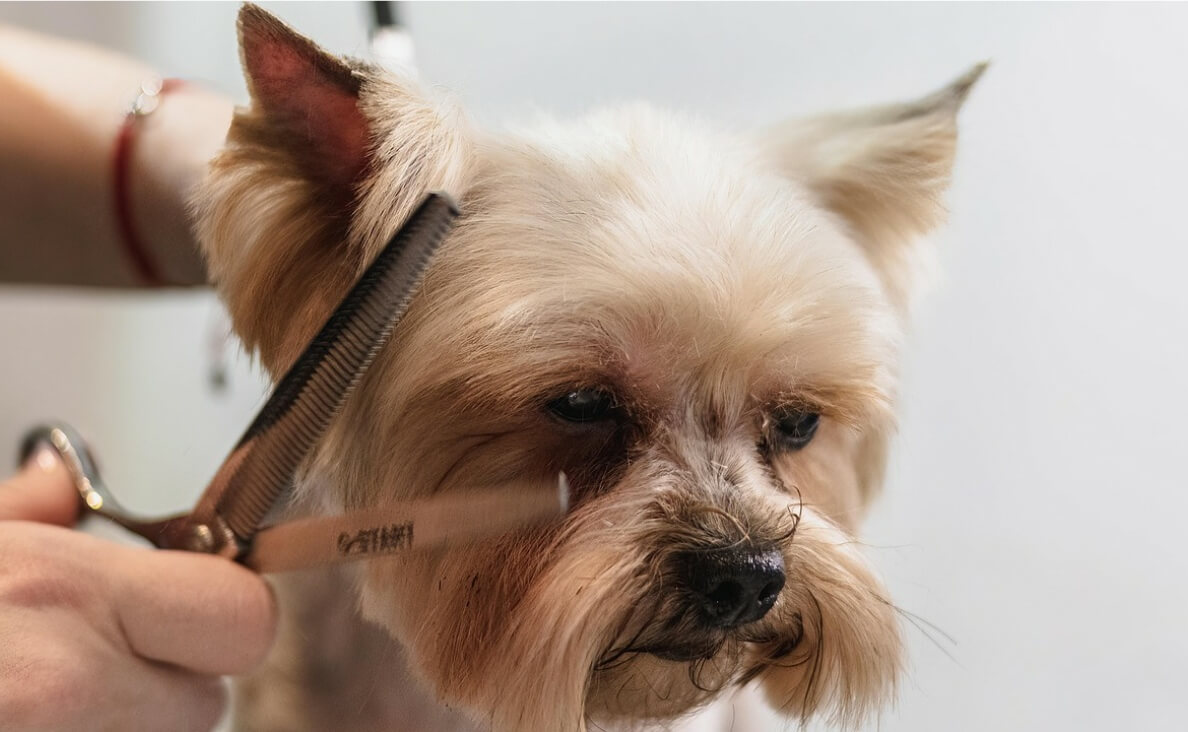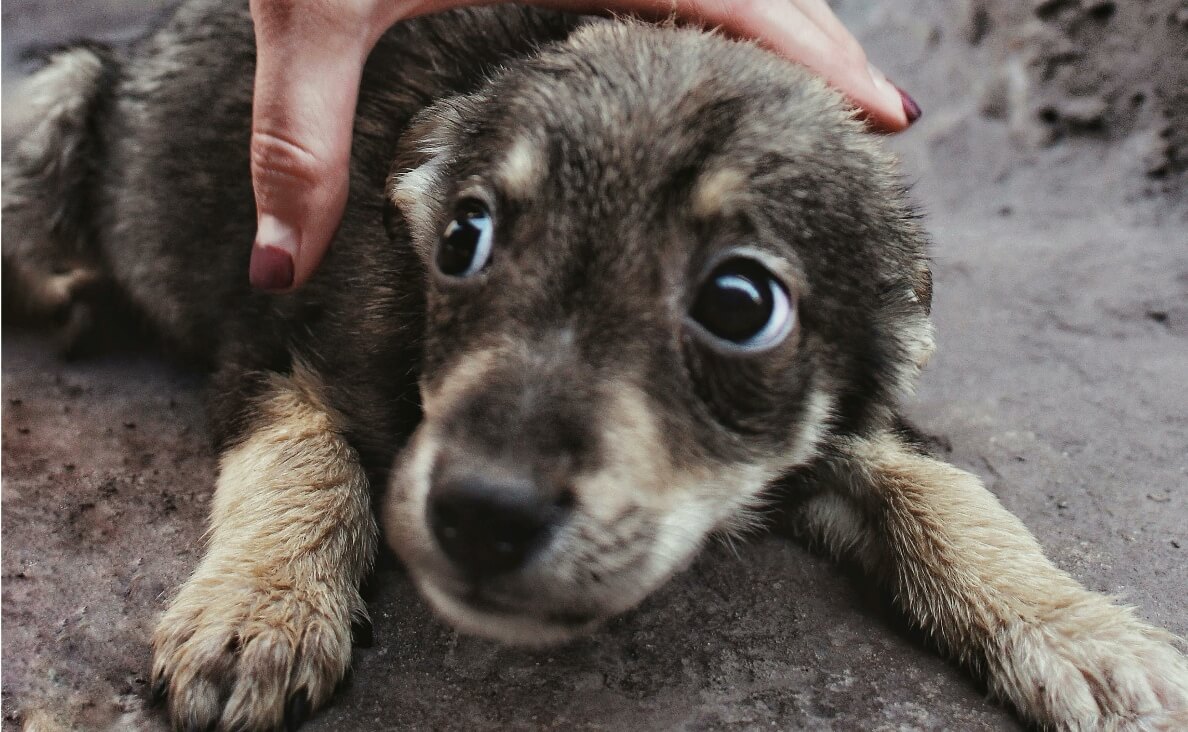
Fear and anxiety are more common in dogs than many pet parents realize. Whether it’s the sound of fireworks, a trip to the vet, or a change in environment, some dogs react with fear that can affect their behavior and well-being. Understanding how to help a fearful dog is not just about making them comfortable—it’s about building trust, security, and a better quality of life.
At Canine Campus, we see all kinds of pups—from the confident tail-waggers to the shy and trembling ones. This guide will walk you through practical, compassionate ways to support your dog. You’ll discover how to help a fearful dog feel safe, calm, and more at ease in everyday situations.
What Causes Fearful Behavior in Dogs?
To understand how to help a fearful dog, you first need to understand what might be causing the fear in the first place. Some dogs are born with anxious temperaments, while others develop fear due to trauma, lack of early socialization, or a specific frightening event. Genetics also play a role—certain breeds may be more prone to nervousness or hypersensitivity to sounds or environments.
Changes in routine, moving homes, or being introduced to new pets or people can all trigger fear. In some cases, a fearful dog may have been rescued from a neglectful or abusive situation. Others may simply be overwhelmed by too much stimulation in a busy household or boarding facility.
Recognizing the root cause is the first step in how to help a fearful dog. Once you know what triggers their fear, you can begin creating a plan to reduce stress and build confidence over time.
If your dog’s fear seems to come out of nowhere or worsens suddenly, it’s wise to rule out a medical issue. Pain, neurological conditions, or hormonal imbalances can all affect behavior. A veterinarian visit may be part of the journey in learning how to help a fearful dog properly and compassionately.

How Can You Tell If Your Dog Is Anxious or Fearful?
Learning how to help a fearful dog begins with understanding their language. Dogs can’t tell us what’s wrong with words—but their bodies speak volumes. Look for signs like trembling, tail tucking, lip licking, yawning when not tired, pacing, or freezing in place. Hiding under furniture or refusing to eat are also common clues.
Some dogs may become reactive when afraid—barking, growling, or lunging in an attempt to protect themselves. Others shut down completely, appearing withdrawn or listless. Recognizing these behaviors is crucial in determining how to help a fearful dog before their fear escalates into something more serious.
Pay attention to patterns. Does your dog start pacing when you grab your keys? Do they tremble at the sight of strangers or try to escape during grooming appointments? These reactions point to specific fears that can be gently addressed.
Keeping a behavior journal can help. Documenting when and where fear occurs will give you insight into what’s triggering the response—and guide you toward the best strategies for how to help a fearful dog in each situation.

Why It’s Important to Address Fear Early
Ignoring fearful behavior in dogs rarely makes it go away. In fact, left unaddressed, fear can worsen over time and even lead to aggression. That’s why it’s so important to learn how to help a fearful dog early on, before habits become harder to reverse.
Dogs that live in a constant state of fear may suffer from chronic stress, which can impact their immune system, digestion, and overall well-being. It also affects your bond with your dog—trust can erode if they associate their fear with your actions, even unintentionally.
At Canine Campus, we often work with pet parents who say, “He’s always been like this” or “She’s just a nervous dog.” While temperament plays a role, there are always steps we can take to improve quality of life. Learning how to help a fearful dog is empowering—for both you and your pup.
Addressing fear early also makes boarding, grooming, and vet visits safer and less traumatic. When dogs are supported through their fears, they become more confident, more relaxed, and more able to enjoy life.
The earlier you take action, the easier it will be to apply techniques that truly work. There’s no shame in asking how to help a fearful dog—it’s a sign of deep love and commitment.

What Calming Strategies Work Best at Home?
When it comes to how to help a fearful dog, your home environment is one of the most important tools you have. Creating a safe, predictable space can reduce anxiety and give your dog room to decompress.
Start by providing a designated calm area—this could be a crate with a blanket over it, a cozy corner with familiar bedding, or a small room where they feel safe. Use calming music or white noise to reduce outside triggers.
Dogs thrive on routine, so keep feeding times, walks, and play sessions consistent. This predictability provides emotional stability and is a foundational step in how to help a fearful dog.
Consider natural calming aids like Adaptil diffusers (which mimic calming dog pheromones) or calming chews with ingredients like chamomile or L-theanine. Just be sure to talk to your vet before trying supplements.
Desensitization and counter-conditioning are proven techniques. Slowly expose your dog to a trigger at a low intensity (like the sound of thunder played at a low volume), and pair it with something positive like treats or playtime. Over time, your dog will associate the scary thing with a good outcome.
Above all, be patient. Celebrate small wins. Every step toward calm is a step forward in how to help a fearful dog become more secure and happy.

How Can You Support Your Dog During Boarding or Grooming?
For many dogs, boarding or grooming can be particularly stressful—and for their humans too. That’s why knowing how to help a fearful dog during these experiences is so essential.
Preparation starts at home. Before boarding, bring items that smell like home—a favorite toy, a blanket, or a shirt you’ve worn. These familiar scents can provide great comfort. Walk your dog through the facility if possible, so it doesn’t feel so unfamiliar when drop-off day comes.
Choose a facility that understands fear-based behaviors. At Canine Campus, our staff is trained to recognize signs of fear and respond with patience, kindness, and positive reinforcement. We allow dogs to approach at their own pace and never force interactions. This trauma-informed approach is key in how to help a fearful dog feel safer when away from home.
Tell the facility staff about your dog’s specific fears. Is your pup scared of clippers? Does she freeze when approached by strangers? The more we know, the better we can tailor care.
If your dog struggles with grooming, consider desensitization at home—brushing them daily with soft tools, gently handling paws, and rewarding tolerance. This builds trust and confidence before they visit the groomer.
Supporting your dog through these experiences is a vital part of how to help a fearful dog grow into a more resilient companion.

When Should You Seek Professional Help?
Sometimes, despite our best efforts, a dog’s fear persists—or worsens. In those cases, knowing how to help a fearful dog means recognizing when it’s time to call in a professional.
A certified dog trainer or behaviorist who specializes in fear-based behaviors can develop a customized plan. These professionals often use positive reinforcement and behavior modification strategies that go beyond what most pet parents know.
In some cases, a veterinarian or veterinary behaviorist may prescribe anti-anxiety medication as part of a broader approach. This can give your dog the mental space they need to absorb training and reduce reactivity.
If your dog shows signs of self-harm, aggression, or extreme panic, don’t wait. Immediate intervention is an important part of how to help a fearful dog avoid further psychological or physical harm.
There’s no shame in seeking help—it’s one of the most loving things you can do. Supporting your dog with the right team around you makes all the difference.

Helping Fearful Dogs Takes Time and Compassion
Learning how to help a fearful dog isn’t about quick fixes. It’s about empathy, patience, and understanding that every dog moves at their own pace. Fear isn’t a flaw—it’s a response. And when we meet that response with compassion, transformation becomes possible.
Whether it’s building a safe space at home, choosing the right boarding facility, or seeking expert support, every step you take builds trust. You don’t have to go it alone—and neither does your dog.
At Canine Campus, we believe that every dog deserves to feel safe, supported, and seen. Knowing how to help a fearful dog isn’t just good pet care—it’s love in action.
🐶 What About You?
Have you helped your dog work through fear or anxiety? What made the biggest difference for them? Share your story in the comments below—we’d love to hear from you.

 Everything You Need to Know About Flying with Your Dog
Everything You Need to Know About Flying with Your Dog Common Household Sounds May Be Stressing Your Dog
Common Household Sounds May Be Stressing Your Dog 10 Tips to Make Moving with Dogs Easier
10 Tips to Make Moving with Dogs Easier 10 Project Toys to Keep Your Dog Busy During Thanksgiving Dinner (or Anytime Your Dog is Bored)
10 Project Toys to Keep Your Dog Busy During Thanksgiving Dinner (or Anytime Your Dog is Bored) 7 Ways to Help Calm Your Dog During a Thunderstorm
7 Ways to Help Calm Your Dog During a Thunderstorm






Leave a Reply